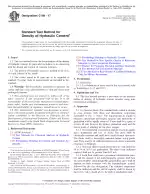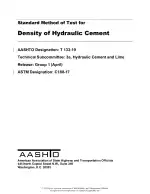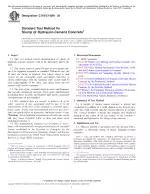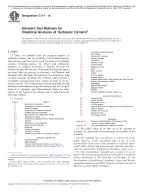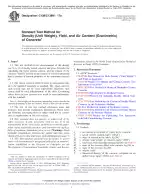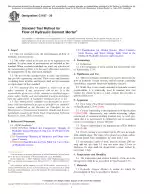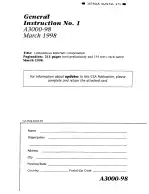ASTM C188-17 PDF Download
Standard ENStandard Test Method for Density of Hydraulic Cement
Also Known As:
The ASTM C188-17 standard provides a procedure for determining the density of hydraulic cement samples using non-instrumental techniques. The density of hydraulic cement is defined as the mass of a unit volume of the solids. This test method is particularly useful in the design and control of concrete mixtures.
The apparatus used in this test method is a Le Chatelier flask, which is circular in cross-section and has been thoroughly annealed before being graduated. The flask should be of sufficient thickness to resist breakage and should be marked with a permanent identification number. Kerosene or naphtha, free of water, is used as the liquid in the density determination. The flask is filled with the liquid to a point on the stem between the 0 and 1 mL mark. After introducing small increments of cement into the flask at the same temperature as the liquid, the flask is rolled or whirled to remove air bubbles until no further bubbles rise to the surface. The final reading is recorded, and the difference between the initial and final readings represents the volume of liquid displaced by the mass of cement used in the test.
It is important to note that fresh hydraulic cementitious mixtures are caustic and may cause chemical burns upon prolonged exposure. Therefore, caution should be exercised when handling and working with these materials.
| Descriptors | density, density test,Hydraulic Cement,Density and Relative Density,Flasks,Physical Test |
| ICS Codes | 91.100.10 - Cement. Gypsum. Lime. Mortar |
| Language(s) | English |
| File Size | 102.4 KB |

